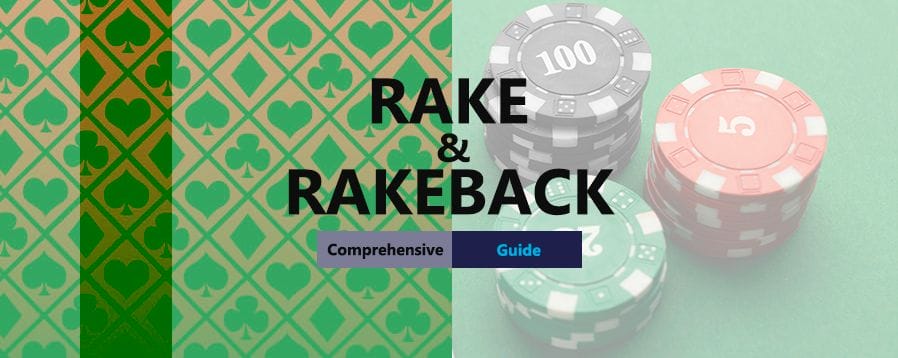
Rake is the commission a poker room or casino takes to organize a game. The payment of rake occurs differently and depends on whether you are playing in a tournament or a cash game.
In tournament poker, the rake is charged once when you pay the tournament fee upon registration. Typically, this amount is about 8%-10% of the contribution amount. Let’s say you decide to play in a tournament for $11. Thus, $10 will go to the tournament prize pool, and $1 will be taken by the poker room as a rake.
In cash games, players pay a rake for each hand played, whereas players see a flop. In other words, the rake is not taken from a pot where one player raised preflop and others folded or where all players folded in the big blind. The commission size may vary; on average, it is 3%- 5% of the bank, depending on the selected room. The size of the rake is also affected by the limit played – the higher the limit, the lower the rake interest rate.
The Rake Cap
There is also such a thing as a rake cap. This limits the maximum amount of rake that a poker room can take from one bank. For example, for medium limits, it may be stated that the rake cap does not exceed $10. Always find out if the establishment where you are going to play has a rake cap, and what it is, otherwise even the standard 4% rake will cost you a pretty penny when playing large pots.
What is rakeback?
Rakeback is the percentage of the rake paid by the player that he will receive back on his balance.
Depending on the room being played, this return may be in the form of real money, tournament tickets, or other bonuses. The size of the rakeback often depends on the VIP status that exists in the poker room, which is based on a loyalty program for players.
There are five main methods of how poker room can calculate rakeback:
Flat Rakeback. In a flat rakeback deal, players receive a fixed percentage of the rake they generate, regardless of factors such as playing volume or the stakes played.
Dealt Rakeback. All players at the table who received pocket cards ultimately receive the same share of the generated rake amount. Moreover, the specific contribution each player made to the bank is not taken into account.
Contributed Rakeback. All players who took part in the formation of the bank in the distribution receive the same amount of rake. The size of the bank deposit by each participant in the distribution is not taken into account. Those players who did not place bets and threw away their cards do not receive a rake.
Weight-contributed Rakeback. The player will receive rakeback, depending on how much he contributed to the pot during the hand.
Hybrid Rakeback. Hybrid rakeback deals combine elements of different types of rakeback, offering players a customized reward structure.
What affects the rake size in poker?
Several factors can influence the rake value. The first of these is the peculiarity of a particular room, which initially sets its bet.
The choice of discipline also plays a role in the size of the rake. For example, in Hold’em, since this format is the most popular, the commission will be higher than at the Omaha tables.
The rake may vary depending on the limit. Most often, the lower the limit, the higher the rake.






